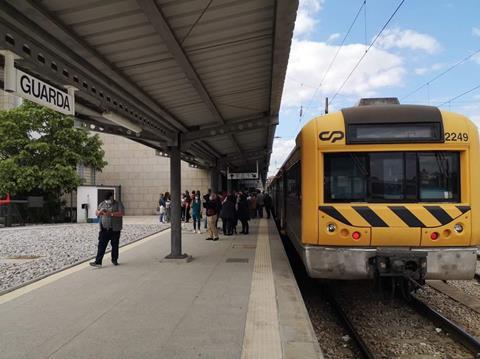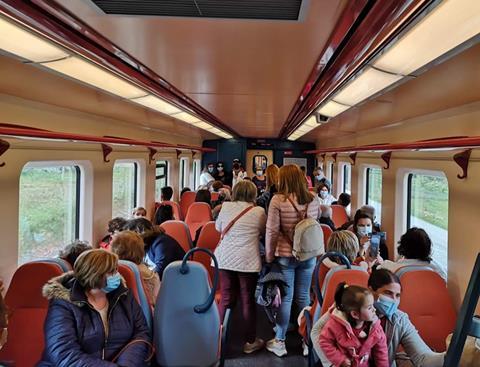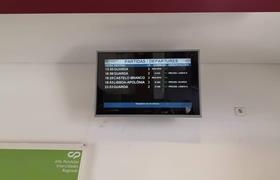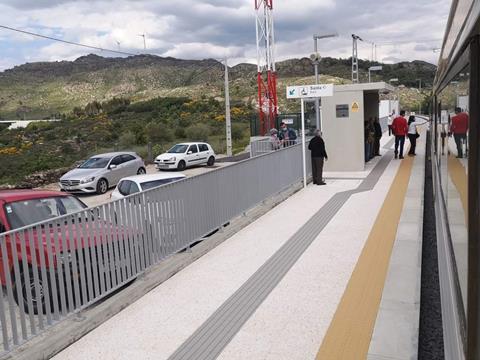
PORTUGAL: Trains returned to the 46 km section of the Beira Baixa line between Guarda and Covilhã on May 2 for the first time in 12 years, with a formal reopening ceremony taking place the following day.
The railway, which provides a potentially important corridor between central Portugal and the Spanish border, fell into disuse in 2009 as a result of poor infrastructure condition. At the time, it was planned that the closure would facilitate a wholesale modernisation of the route, but in practice work was undertaken on just 10 km before the programme hit funding problems in the wake of Portugal’s economic crisis.

The upgrading project was revived in 2017 under the government’s Ferrovia 2020 investment plan, at which time it had been hoped to have the route back in operation by December 2018. However, the work was again subject to significant delays.
The total cost of the upgrading is now put at €77∙1m, of which EU funding covered €60∙6m; a joint venture of Ramalho Rosa Cobetar and Conduril was lead contractor for Infraestruturas de Portugal.
Structures, stations, chords
Key elements of the upgrading work include the renewal of 36 km of 25 kV 50 Hz electrification, installation of modern telecoms equipment including GSM-R, and introduction of the national ATP system known as Convel. Significant structural works have been undertaken to improve drainage and stabilise embankments and cuttings.
Operational flexibility of the route has also been improved by the construction of the Concordância das Beiras at Guarda, a 1∙5 km single-track electrified chord linking the Beira Baixa line to the Beira Alta route from Pampilhosa to the border crossing at Vilar Formosa. Featuring a new 238 m long bridge over the Diz River, the connection avoids the need for trains to reverse at Guarda.
Other works included the renovation of six bridges and the conversion of 18 level crossings to remote operation. A 600 m loop has been built at Belmonte station to enable the route to handle longer and heavier trains, while the stations at Caria, Maçainhas, Benespera and Barracão/Sabugal have been refurbished with new platforms, improving accessibility for passengers. However, there has been limited renewal or realignment of the permanent way, meaning the line speed remains unaltered at 100 km/h.
Thales was responsible for the supply and commissioning of the new signalling for the line, having already provided the signalling for both Covilhã and Guarda stations. A PIPC G3 electronic interlocking has been installed to control the loop at Belmonte and the stations at Caria, Maçainhas, Benespera and Sabugal, using DCA object controllers and track circuits for train detection.
Service pattern

Revenue services over the route resumed on May 2, with CP operating four Intercity services and two regional trains in each direction, all run as extensions of services which had previously terminated at Covilhã. The journey time between there and Guarda ranges from 41 min to 50 min. To stimulate ridership, fares for inter-city trains between the two towns have been reduced to match those of regional services. The service between Guarda and Lisboa has been doubled to six trains each way per day, with three running via each of the two corridors serving the town. The fastest journey to the capital takes 4 h 10 min.

Over the next couple of years, the focus of investment will shift to the Beira Alta route, which is set to close for a series of engineering blockades under the North International Corridor programme to facilitate the operation of more and longer freight trains, including the installation of ETCS Level 2. Reopening of the route between Guarda and Covilhã is a timely fillip to enable freight traffic to and from Spain to be diverted around the blockade.

















